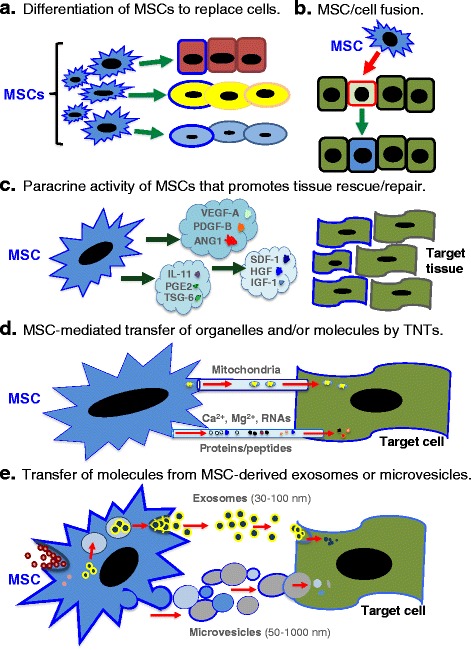Fig. 1.

MSCs rescue and/or repair injured cells and tissues by diverse mechanisms. a Differentiation into replacement cell types. b Rescue of damaged or dying cells through cell fusion. c Secretion of paracrine factors such as growth factors, cytokines, and hormones. VEGF vascular endothelial growth factor, PDGF platelet-derived growth factor, ANG1 angiopoietin-1, IL-11 interleukin-11, PGE2 prostaglandin E2, TSG-6 TNF-stimulated gene-6, SDF-1 stromal-derived factor-1, HGF hepatocyte growth factor, IGF-1 insulin-like growth factor-1. d Transfer of organelles (e.g., mitochondria) and/or molecules through tunneling nanotubes (TNTs). Ca 2+ calcium, Mg 2+ magnesium. e MSC-mediated transfer of proteins/peptides, RNA, hormones, and/or chemicals by extracellular vesicles such as exosomes or microvesicles. Exosomes are generated through the endocytic pathway and released through exocytosis. By contrast, microvesicles are produced by cell surface budding and released directly from the plasma membrane. Note that the figure is not drawn to scale. Also, use of mechanisms a–e is not equivalent. For example, for MSCs administered intravenously, use of mechanism c is likely more relevant than are mechanisms (a) or (b)
